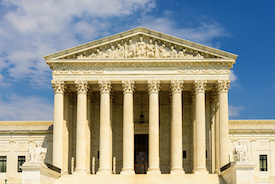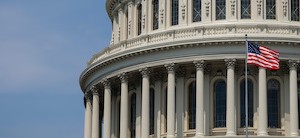U.S. Supreme Court Rules on County of Maui Litigation

On April 23, 2020 the U.S. Supreme Court issued an opinion in County of Maui v Hawaii Wildlife Fund. This is one of the most significant Clean Water Act (CWA) cases to reach the Court in the last decade and, could have significant implications for the water and wastewater community.
The case presented the Court with a key jurisdictional issue: whether the CWA’s National Pollutant Discharge Elimination System (NPDES) permitting requirements apply to discharges from point sources that enter groundwater before reaching navigable waters. In a 6-3 ruling, the Supreme Court held that discharges to groundwater that ultimately end up in surface waters will require an NPDES permit if the discharge to groundwater is the “functional equivalent” of a direct discharge to a surface water. The Court identified time and distance as the primary factors for determining whether a discharge meets this test, but also listed a number of other factors that would be used to make that determination.
Many fear that this ruling represents a win for potential plaintiffs looking to sue water and wastewater agencies. While more limited than the 9th Circuit’s “fairly traceable” standard, the “functional equivalent” standard is still nebulous and means plaintiffs groups will be able to allege that a discharge to groundwater from an infiltration basin, irrigation channel, green infrastructure or leaky pipe is the functional equivalent to a direct discharge.
CASA has been tracking this case since 2014 when the District Court held that a release of pollutants into groundwater that migrates to hydrologically connected navigable waters violates the CWA, otherwise known as the “conduit theory” of liability. The case was then appealed to the 9th Circuit where CASA joined an amicus brief highlighting why the ruling could significantly increase potential liability for local agencies under the CWA as well as the ramifications and unintended consequences of applying such a theory to local water and wastewater utilities across the nation.
The 9th Circuit the held that the County of Maui’s releases of treated wastewater from injection wells that ultimately reached the Pacific Ocean via groundwater required a NPDES permit because the discharges were “fairly traceable” back to a point source. This was a much broader and more nebulous standard than the conduit theory. The U.S. Supreme Court hen accepted the case and heard oral argument in late 2019. The result was a 6-3 opinion that clearly rejected the broad “fairly traceable” standard of the 9th Circuit but imposes a new “functional equivalent” standard that many fear could be . This standard is now the law of the land, which could at a minimum bring some consistency to how regulators, permittees and courts apply the analysis in various circumstances.
In his dissent, Justice Alito summarized what we might expect to see quite accurately in the coming years:
“…the Court makes up a rule that provides no clear guidance and invites arbitrary and inconsistent application…Entities like water treatment authorities that need to know whether they must get a permit are left to guess how this nebulous standard will be applied…dischargers will be able to argue that the Court’s multi-factor test does not require a permit. Opponents will be able to make the opposite argument. Regulators will be able to justify whatever result they prefer in a particular case. And judges will be left at sea.”
For additional details regarding the ruling and likely next steps, there have been several alerts developed by law firms who specialize in this area, including those representing CASA in the case.
Senate Committee Releases Draft Water Infrastructure Bills
![]() This week, the Senate Committee on Environment and Public Works’ Chairman John Barrasso (R-WY) and Ranking Member Tom Carper (D-DE) unveiled drafts of America’s Water Infrastructure Act of 2020 (AWIA 2020) and the Drinking Water Infrastructure Act of 2020 (DWIA 2020). The two drafts represent the first iteration of the Senate’s Water Resources Development Acts (WRDA) for 2020 that will deliver a comprehensive federal approach to address the nation’s water infrastructure needs.
This week, the Senate Committee on Environment and Public Works’ Chairman John Barrasso (R-WY) and Ranking Member Tom Carper (D-DE) unveiled drafts of America’s Water Infrastructure Act of 2020 (AWIA 2020) and the Drinking Water Infrastructure Act of 2020 (DWIA 2020). The two drafts represent the first iteration of the Senate’s Water Resources Development Acts (WRDA) for 2020 that will deliver a comprehensive federal approach to address the nation’s water infrastructure needs.
The committee separated U.S. Army Corps of Engineers (USACE) and clean water infrastructure provisions and drinking water provisions into two bills. AWIA 2020 provides a total of $17 billion in new federal authorizations to support USACE and municipal wastewater, stormwater, and other clean water infrastructure needs. Titles II and III of the AWIA draft contain provisions related to clean water infrastructure. DWIA 2020 provides a total of $2.5 billion to address the nation’s drinking water needs.
Since the committee is not able to meet for public hearings due to the COVID-19 crisis, the committee is seeking electronic input from five invited organizations to comment on the draft bills. Following the receipt of the input, the committee will accept committee member questions to the five witnesses by April 24. Responses from the invited speakers must be received by May 1. Comments from other stakeholders will also be accepted on May 1.
Access to review the discussion drafts and section-by-section summaries of the drafts can be found below.
- Committee Fact Sheet of Two Discussion Drafts
- AWIA 2020 Discussion Draft
- Section-by-Section Summary of AWIA 2020
- DWIA 2020 Discussion Draft
- Section-by-Section Summary of DWIA 2020
Congress Passes Coronavirus 3.5 Relief Package
 The President signed into law the latest version of a federal COVID-19 relief package, H.R. 266, Paycheck Protection Program and Health Care Enhancement Act. Dubbed the coronavirus 3.5 relief package, H.R. 266 builds off the CARES Act Congress passed last month. This new package provides a total of $484 billion to support the Small Business Administration’s Paycheck Protection Program (PPP), assist hospitals, and support national testing initiatives. The bill, however, does not provide funding to support states and local governments. H.R. 266 passed the Senate by voice vote and the House approved the package on a roll call vote of 388-5. A brief summary of the key provisions within the bill can be accessed here.
The President signed into law the latest version of a federal COVID-19 relief package, H.R. 266, Paycheck Protection Program and Health Care Enhancement Act. Dubbed the coronavirus 3.5 relief package, H.R. 266 builds off the CARES Act Congress passed last month. This new package provides a total of $484 billion to support the Small Business Administration’s Paycheck Protection Program (PPP), assist hospitals, and support national testing initiatives. The bill, however, does not provide funding to support states and local governments. H.R. 266 passed the Senate by voice vote and the House approved the package on a roll call vote of 388-5. A brief summary of the key provisions within the bill can be accessed here.



 @CASA_CleanWater
@CASA_CleanWater